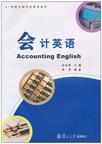会计英语
2010-10
复旦大学出版社
吴芳,胡志勇 编
147
随着中国经济的进一步发展,会计这门通用商业语言越来越成为商业人士需要掌握的一项技能。而对外交流的日益频繁及深入,要求商业人士不仅能读懂中文的会计报表及相关财务信息,也要能看懂英文的报表及相关财务信息。反过来,会计人员如果能够了解并掌握规范的中英文报表及相关财务信息,他们将会有更多的发展机会,所以会计英语已成为专业人士提升自身竞争力的一项有力武器。 本书在选材时,在保证英文表达地道的同时,也注重易懂性,通过一些简单的例子,加深读者对知识点的了解。书中每单元的开始都有内容介绍,便于读者轻松了解本单元的主要内容。每单元都有两篇文章,各有不同的侧重。第一篇文章侧重于语言知识点的讲解,除了专业词汇配有中英文注释之外,还有常用表达的例句和文中难句的分析,旨在帮助读者学习会计专业词汇及语言表达;第二篇做为辅助,一方面扩充会计知识,另一方面在相应的课后练习中也要求读者学以至用,根据所学知识进行讨论或组织活动强化自己的语言表达能力及对会计知识的理解。 在各单元的安排上,本书采用逐渐深入的方式,从最基本的会计的定义着手,到介绍会计假设及原则。之后又介绍了会计恒等式的左右两边,即资产、负债及所有者权益。在了解了基本的会计要素之后,书中又分别介绍了资产负债表、损益表及现金流量表等三大财务报表,以及如果解读财务表。在书的最后两单元,分别介绍了成本会计和审计,以期使本书的内容更加全面。 虽然在编书的过程中力求使本书编得完善些,但由于才疏学浅,时间有限,难免有许多不尽如人意之处,一些差错也在所难免,有待进一步改善,恳请读者多批评指正。感谢给予本书编写、出版大力支持的各位!
作为会计英语教材,《21世纪大学行业英语系列:会计英语》编写过程中尝试将会计专业知识同英语知识学习结合起来,在帮助读者对会计专业理论有一个相对系统了解的同时,能让读者掌握基础的会计英语词汇及表达。《21世纪大学行业英语系列:会计英语》共10个单元,每个单元有两篇文章,其中Text 1为主干,以知识学习为导向,文章后有生词注释、常用词组解释及难句分析。Text 2为辅助,以任务学习为导向,在文章后会相应地要求学生进行讨论或做练习,以巩固对本单元所学知识的理解。《21世纪大学行业英语系列:会计英语》内容包括会计的定义、会计假设及原则、簿记、资产、负债、所有者权益、财务报表及财务报表分析、成本会计介绍及审计等。
Unit 1 Introduction to AccountingText 1 Introduction to AccountingText 2 Accounting Scandal——Case StudyUnit 2 Accounting Assumptions and PrinciplesText 1 Introduction to Accounting AssumptionsText 2 Accounting PrinciplesUnit 3 BookkeepingText 1 Introduction to BookkeepingText 2 Types of Bookkeeping SystemsUnit 4 AssetsText 1 Introduction to AssetsText 2 Assets DepreciationUnit 5 Liabilities and Owner's EquityText 1 Introduction to LiabilitiesText 2 Owner's EquityUnit 6 Financial Statements ( Ⅰ )Text 1 Introduction to Financial StatementsText 2 Balance SheetUnit 7 Financial Statements ( Ⅱ )Text 1 Income StatementText 2 Cash Flow StatementUnit 8 Financial Statement AnalysisText 1 Introduction to Financial Statement AnalysisText 2 Ratio Analysis Case Study: Microsoft Corporation(Selected Ratios)Unit 9 Cost AccountingText 1 Introduction to Cost AccountingText 2 Case Study of Standard Cost AccountingUnit 10 AuditingText 1 Introduction to AuditingText 2 Sample Independent Audit ReportKey
which date back more than 7,000 years, were found in the Middle East. Thepeople of that time relied on primitive accounting methods to record the growthof crops and herds. Later, as man began to trade, we established the conceptof value and developed a monetary system. Evidence of accounting records canbe found in the Babylonian Empire03(4,500 B. C. ), in Pharaohs' Egypt and in theCode of Hammurabi~ (2,250 B. C. ). Eventually, with the advent of taxation,record keeping became a necessity for governments to sustain social orders. The Italian Renaissance brought the artistic accomplishments of man to newheights. At this time, Venice was the business cradle of Europe, and it was hereamong merchants that double-entry accounting was invented and practiced. Duringthis period, Fra Luca Pacioli wrote his Summa dealing with record keeping anddouble-entry accounting, one of the very first published books of the time thatbecame the accounting "textbook" for the next 500 years. The Summa made Paciolia celebrity and insured him a place in history, as "the Father of Accounting". Fra Luca Pacioli did not invent double-entry accounting; instead, hesuperbly described a method used by merchants in Venice during the ItalianRenaissance. His system included most of today's accounting routines such asthe use of memorandums, journals and ledgers. His ledger included assetsreceivables and inventories —— liabilities, capital, income, and expenseaccounts. He described the year-end closing entries and proposed that a trialbalance be used to prove a balanced ledger.
